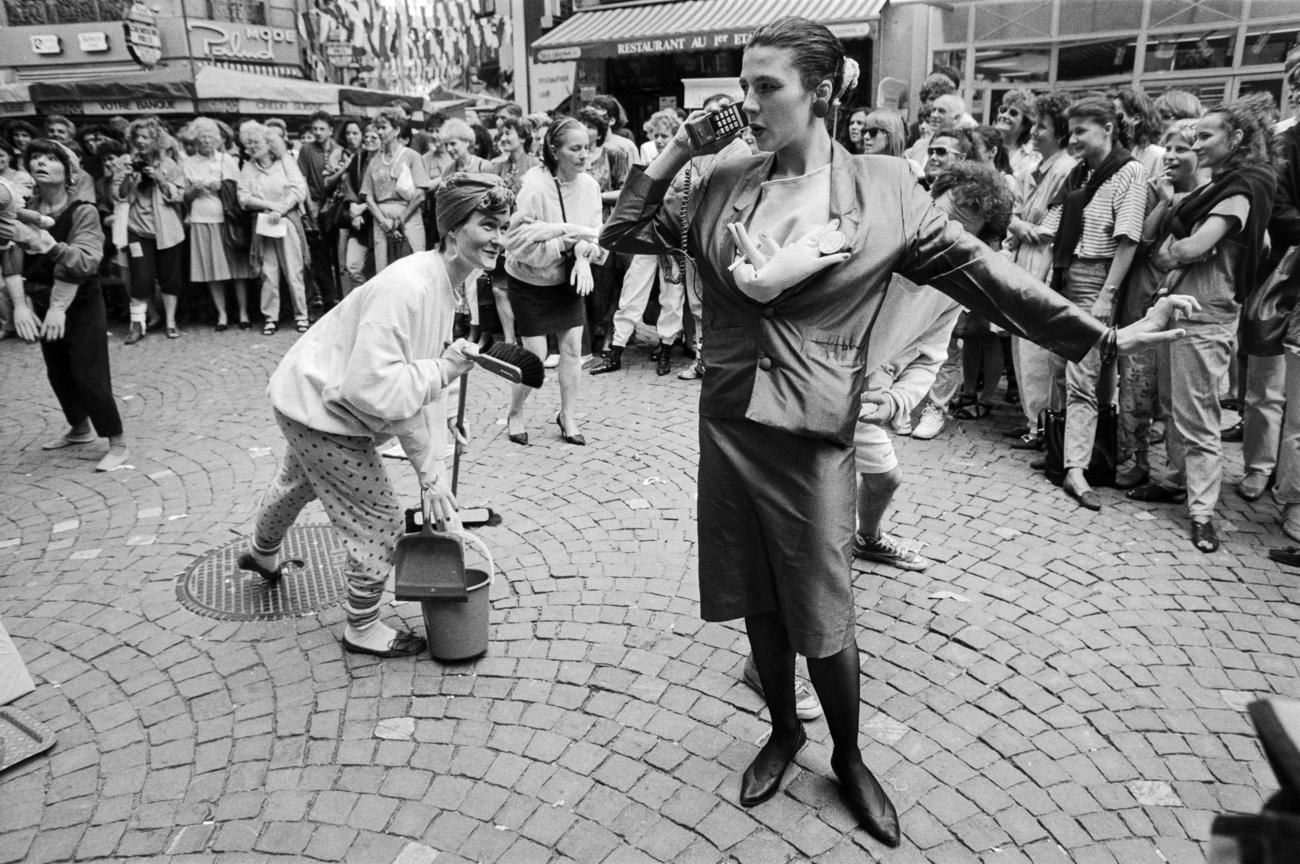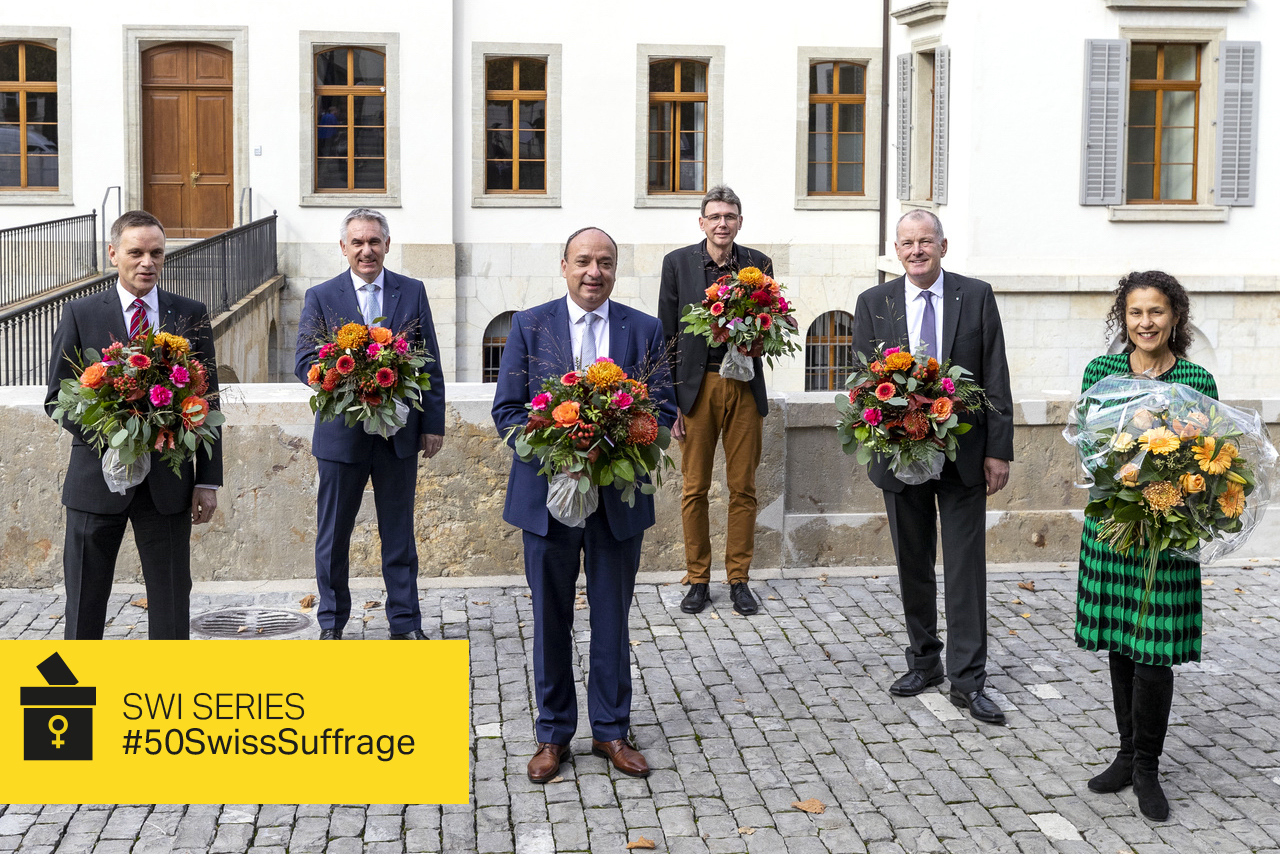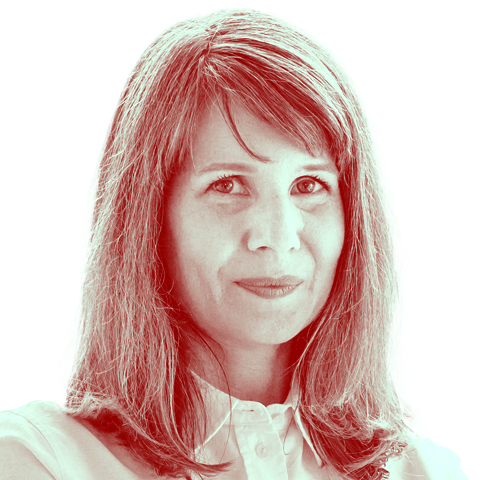
Why women made historic gains in the 2019 Swiss elections

In the 2019 federal elections, a record number of women won seats in the Swiss parliament. The nationwide women’s strike in June of the same year was among the forces behind this singular result.
The results in 2019 dwarfed all other previous achievements women had made in politics. By winning 84 of the 200 seats in the House of Representatives, there were now more women representatives than ever before. The share of women in the House rose by 10 percentage points compared to the previous elections in 2015.
With women making up 42% of the lower chamber, Switzerland vaulted into the top ten in Europe External linkfor female representation in parliament.
The share of women also increased in the Senate, where 12 women (26%) have held seats since 2019, up from seven in the previous legislative period.
To understand how this unprecedented result came about, we must start with a look back.
Slow but steady rise in numbers
When it comes to voting rights for women, Switzerland was no pioneer. Humankind landed on the moon before Swiss women were granted the right to vote at a national level. It was not until a second referendum was held in 1971 that two-thirds of Swiss men voted in favour of granting women voting rights.
The first national referendum took place in 1959. At that time, only the men of cantons Geneva, Vaud and Neuchâtel were willing to grant their wives, mothers and daughters the right to vote and stand for election on a national level.
As soon as women were given these rights, they ran for office: in autumn 1971, the first 12 women were elected to parliament.
After that the share of female parliamentarians rose slowly but steadily. The only exception was in the 1990s, when the number of women in political offices rose significantly in the wake of the first women’s strike, which was launched after the Social Democrat Christiane Brunner was not elected to the seven-member governing body, the Federal Council.
In the two decades between 1987 and 2007, the number of women in the House of Representatives doubled. But in the 2011 elections, the number of female parliamentarians dropped slightly for the first time. In 2015, it increased again across Switzerland to reach a 32% share (orange line).
A women’s strike and a targeted campaign
The significant increase in seats in the 2019 election can be attributed to the general mood in society, but also to specific events.
Just a few months before the general elections in June 2019, the second nationwide women’s strike took place.
About half a million people across Switzerland took to the streets to demand equal rights for women. The strike brought the issues of gender equality and women’s participation to public attention and attracted widespread media interest.

More
Why Swiss women are back on strike today
Around that time, the parties were finalising their electoral lists and nominations for candidates.
In autumn 2018 – one year before the elections – the Federation of Swiss Women’s Associations Alliance F launched the “Helvetia is calling!” campaign. Its aim was to advocate for a more balanced gender distribution in cantonal and national governments and parliaments.
The campaign urged women to run for political office and encouraged parties to nominate female and male candidates in equal numbers.
Parties nominated more women in 2019
There are other tangible factors that led to the women’s success in the 2019 elections. For one, the number of people running for the House of Representatives reached a record 4,652 in 2019, for an above-average increase in candidates compared to the 2015 elections.
Women were primarily responsible for this: in most cantons, the number of women candidates increased more than the number of male candidates. At 1,875, women accounted for 40% of all candidates.

More
Women in Swiss politics: still a long way to go
In the 2019 elections, every party nominated more women than in 2015. However, the parties were not only keen on having more female candidates – they also banked on their success in the elections, which was part of the reason why most parties gave their female candidates better positions on their lists than ever before.
A top spot on the party list is not only instrumental for success, but it also reflects the popularity and familiarity of a candidate within a party. The parties usually put their previous candidates right at the top, but if there are no such candidates, then they will give the top spots to those who are most likely to do well in the elections.
Green party among the winners
Women’s electoral success in 2019 is also linked to the fact that the federal elections resulted in a significant change in political party forces. The election winners were the Green Party and the Green Liberal Party – in both parties, at least as many women won seats as men.

More
How the Swiss Green Party became a force to be reckoned with
These two parties also had a great number of women candidates: 55% of the candidate pool for the Green Party were women, the highest proportion out of all the parties. The proportion of female candidates in the Social Democratic Party was 51% and over 40% in the Liberal Green Party.
In many parties, the gender ratio of candidates roughly corresponds to the gender ratio of the elected. This means that if the parties with a particularly large number of female candidates gain many seats, the overall proportion of women increases. This was the case in 2019.
Statistically speaking, women had a slightly better chance of getting elected to parliament than their male counterparts.
An analysis of the Select post-election surveyExternal link shows that female candidates in 2019 received more support from the electorate than in previous elections. Many voters consciously chose female candidates.
Looking ahead to 2023 elections
Since parties have yet to publish their final candidates’ lists for elections this autumn, it’s not known how many women plan to throw their hats in the ring.
But with “Helvetia is calling!”, the executive committees of all parties in the government have pledged to increase or maintain the proportion of women in the 2023 elections.External link
On June 14, 2023, women will take to the streets again, and the organisers of the women’s strike hope that it will have an impact far beyond the Swiss borders.
But in the end, it is up to Swiss voters at home and abroad to decide how many women will ultimately have a seat in parliament in the next legislative period.

More
Swiss Abroad views: what voting records show
Edited by Mark Livingston. Translated from German by Billi Bierling/gw

In compliance with the JTI standards
More: SWI swissinfo.ch certified by the Journalism Trust Initiative





























You can find an overview of ongoing debates with our journalists here . Please join us!
If you want to start a conversation about a topic raised in this article or want to report factual errors, email us at english@swissinfo.ch.